My last stay in London brought me to the work in progress show at the Royal College of Art and i, very unsurprisingly, spent most of my visit there in the exhibition space of the Design Interactions department. Over the next few days, I’m going to highlight a couple of projects i found particularly engaging and/or puzzling. Known Unknowns, by Steffen Fielder and Jonas Loh, for example questions our relationship to randomness. The designers explored the importance of randomness in our daily life but also investigated whether randomness actually exists or if it is just a lack of knowledge which makes things appear random to us.
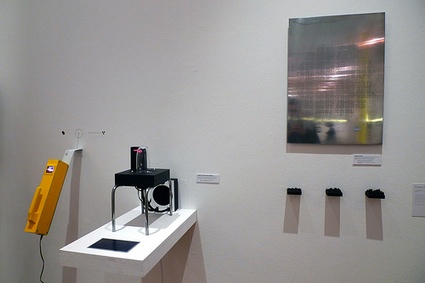 Image by Steffen Fiedler
Image by Steffen Fiedler
This first part of the project focuses on the generation of random numbers using two different seeds:
The Random Event Harvester is based on a Geiger counter that notices radioactive particles, producing a bitstream that is afterwards converted in real numbers. The portable object collects random numbers in the environment and stores them with associated geographical information.
The second device is the Cosmic Ray Detection Chamber which is inspired by current approaches to generate true rather than pseudo random numbers. The design is based on a Wilson Chamber that visualises tracks of cosmic rays that are energetic charged subatomic particles that originate from outer space. These tracks are then used to generate random values.
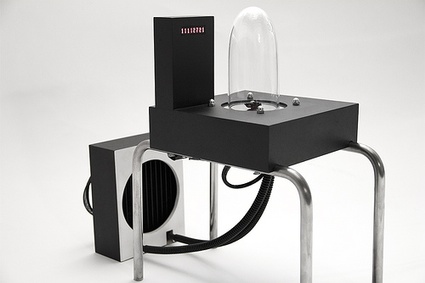 The Cosmic Ray Detection Chamber
The Cosmic Ray Detection Chamber
I had a quick interview with the designers about their project. And i’m glad i did because what appeared at first to be a curious and quirky project turned out to be a source of fascinating discoveries:
The page about your project refers to ‘true’ random numbers and ‘pseudo’ random numbers. Can you explain what you mean by that? how can a random number be ‘pseudo’?
The term pseudo random describes a set of values that are not uniformly distributed; some numbers occur statistically more often than others. This especially happens when they are generated by computer algorithms. To act by chance is supposed to be the most difficult task logic machines can achieve. That’s why computational produced sets show patterns that recur and therefore are unsuitable when it comes to applications that need truly unpredictable inputs. An example is represented by our steal etching displayed in the show. Those numbers were generated by the Random Event Harvester that uses the binary system to produce values between 0 and 255 (combination of eight digits, either 1 or 0). The visualisation shows a fractal because the chance is most likely to have almost the same amount of 1s and 0s within one binary set.
Services that offer true random values generate these by reading noise in quantum scale. The idea inspired us to search for ways on how to make such phenomena tangible. The Cosmic Detection Ray Chamber is an experimental setup to display energetic charged subatomic particles that surround us, whereby we use computer vision to track trails of passing radiation.
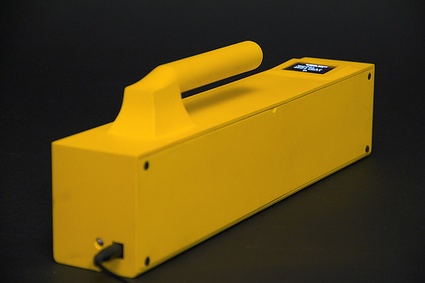 The Random Event Harvester
The Random Event Harvester
One of the devices that you designed collects random numbers in the environment and store them with associated geographical information. Why would you want to associate geolocation to random numbers? Is there any purpose to that?
We have been inspired by present methods of simulating scenarios and case studies as a way of predicting the future or establishing frameworks for decision making. Large amounts of random or pseudo random sets are needed that have no relation with the actual subject or space. Our approach with the Random Event Harvester is to create this connection and to support a more conscious relationship with the unpredictable and our environment.
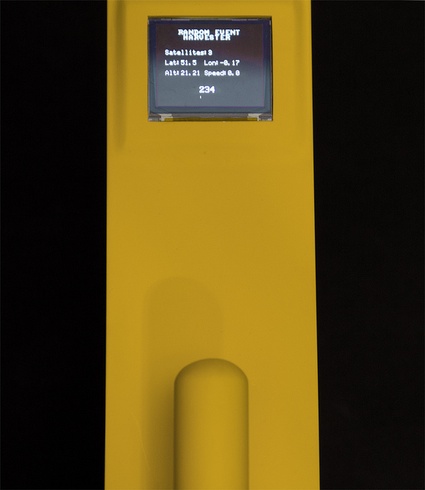 The Random Event Harvester
The Random Event Harvester
How important can random numbers be in our daily life? if you’re not a gambler that is!
Our fascination for random numbers comes from the paradox that they represent chaos, but yet are essential in processes that aim to produce reliable and precise outcomes. Security encryption and simulations in various fields (i.e. predictions in economics called Monte Carlo Studies) rely on random numbers. Such approximation methods are widely applied in various domains: designing nuclear reactors, predicting the evolution of stars, forecasting the stock market, (etc.) The bigger question behind the project is whether randomness actually exist or if it is just a lack of knowledge, if we could introduce the very natural chaos to our daily life driven by security, patterns and determinism.
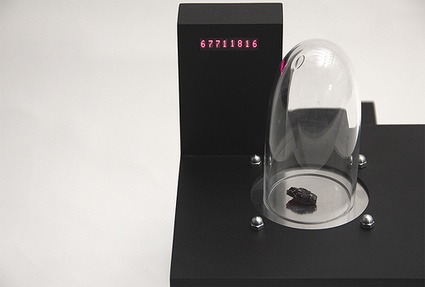 The Cosmic Ray Detection Chamber
The Cosmic Ray Detection Chamber
The devices have a retro futuristic look. Can you tell us something about their design?
I think especially with the second one (The Cosmic Ray Detection Chamber) you are totally right. We were joking as well that it looks a bit like a future space station from the 70s. A reason for that is that we see technology as a creative medium and are basically researching through practical experimentation. We often discover new possibilities and ideas through this approach, maybe a bit similar to the way an inventor works. Also, we think that especially fictional products become more believable when distinctive parts function. The design of the Cosmic Ray Chamber was strongly influenced by that. We decided to keep it very utilitarian and transparent ‚’bauhausian’ in a way, to make the process of how it works quickly understandable. For example one of the difficult parts regarding the functionality, was that the chamber has to be cooled down to -20¬∞C which is usually done with dry ice. We discovered that the cooling process is also possible using Peltier elements in combination with a water cooling system ‚which then influenced the whole design again.
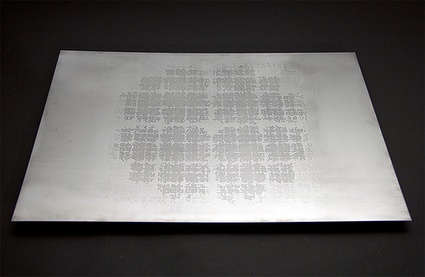 Fractals (etching and millings) made using the Random Event Harvester
Fractals (etching and millings) made using the Random Event Harvester
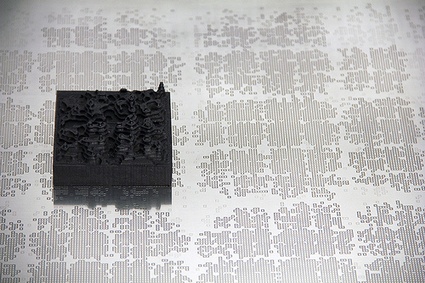 Fractals (etching and millings) made using the Random Event Harvester
Fractals (etching and millings) made using the Random Event Harvester
Do you plan to push the project further with new devices, new applications or scenarios?
Yes, absolutely. The current state of our project opens a whole new set of possible scenarios and applications. Rather than narrowing it down to one specific application we want to keep it more abstract; enabling different interpretation layers. At the moment our intent is to develop different ways to communicate the bigger picture. It could be a services or institute which is offering random numbers & specific patterns generated through radioactive radiation and cosmic rays. We like the idea of using the random numbers for political and social purposes: The distribution of resources and money could be organized by random numbers. We could also imagine random number driven immigration politics. Would they be fairer than the Australian-style point system where people are actually rated after their skills? And if not, could you blame the higher instance, the cosmic rays?
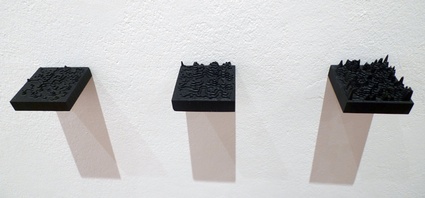 Random number distributions based on more than 90.000 randomly generated values by the Random Event Harvester
Random number distributions based on more than 90.000 randomly generated values by the Random Event Harvester
Thanks Steffen and Jonas!
All images used in this post were kindly provided by the designers. They have uploaded more images of their work on flickr. See Jonas’ set and Steffen‘s.
